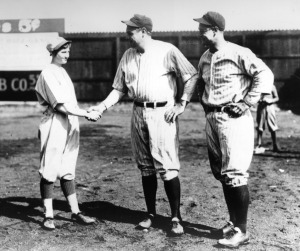Having too much going on can be a challenge, especially with schedules, as I talked about a few posts ago. It can also ruin dinner, as in my case with the charred fries.
Author Terri Rowe has also had too much on her plate. She shared on facebook:
[I] Put in double the amount of a spice-so ended up making a double batch of cookie dough—little extra work-but okay in the end.
I’m sure accidentally doubling spices gave Miss Terri a panicked moment, but I don’t think having too many cookies on my plate wouldn’t be such a bad problem. 🙂 But sometimes I do have the “too much on my plate problem” with my writing.
I’m revising my middle grade (I think it has finally grown up to officially earn MG status) book about a tomboy. In one scene, the main character, Mabel, is at a Blossoms (like girl scouts) sign-up fair. Her best friend Tia ropes her in to square dancing. But when the square dance caller introduces a special dance helper, who turns out to be Mabel’s mother, Mabel is so embarrassed she can’t concentrate on the steps. She makes a wrong move and bumps into the troop leader’s daughter (and antagonist) Lacy. Fortunately, Lacy’s mother separates the girls before they swing at their partners.
Did you happen to count the characters in that scene? There are six. Six main or supporting characters. That may not seem like that many, and I know other writers have had more, but it is a lot for me. Add that they’re all dancing, there are other dancers and parents, and most of the characters introduced are in one kind of conflict or another and I’ve got a tricky situation.
But the scene is too important to cut. So what can I do?
At a critique partner’s suggestion, I studied a master: Judy Blume.
 In Fudge-a-Mania, there are 16 well-developed main or supporting characters. And two dogs. A few scenes have most or all of the characters. A couple even have all of those characters and a few more casually introduced ones. And the scenes are subtle, seamless, and without authorial heavy-handedness. How does she do that?
In Fudge-a-Mania, there are 16 well-developed main or supporting characters. And two dogs. A few scenes have most or all of the characters. A couple even have all of those characters and a few more casually introduced ones. And the scenes are subtle, seamless, and without authorial heavy-handedness. How does she do that?
Well, I transcribed a scene to find out. Re-typing it really showed me the subtle techniques Judy Blume used to keep all of her characters involved. After it was typed, I highlighted each character’s appearance in a different color. The scene is as colorful as a crayon-box, but making it that visual really helped. Here is what I learned:
1. One or more statements should be addressed to all of the characters present.
I chose the scene in Fudge-a-Mania where Mr. Fargo announces that he is going to paint a collection inspired by the point of view character, Peter’s baby sister. The scene opens with him delivering his news to the group. He even says “You’ll all have to come.” With the whole group’s attention peaked, Peter’s grandma then announces some news of her own.
2. Body language, gestures, and thoughts (being mindful of the point of view) bring back characters who are fading into the background.
The characters who are present in this scene are never listed. They aren’t acknowledged all at once. The reader learns who is there by the character reacting when it is appropriate for him or her to do so. This means all characters must be well-developed. It can’t just be any gesture or phrase or thought. It has to be what that particular character would make in that particular situation.
3. Not every character has to react to everything.
There is a chunk in the middle of the scene where even Peter, the point of view character, is silent. And I didn’t even notice it until I retyped the scene and highlighted. It was just more appropriate for only certain characters to speak up at this point, so Judy Blume let all of the others watch quietly instead of forcing them into the scene. Masterful.
As I continue to revise my square dance scene, I plan to apply the lessons I learned from Fudge-a-Mania. I’m also going to highlight when each of my characters appear to make sure that they are showing up only when it would be natural for them to do so and only in ways that fit their character.
It looks like I still have a lot of work on my plate.
More on Balancing Lots of Characters:
Apparently other writers also think about this. Here is a thread on the Absolute Write Water Cooler: http://absolutewrite.com/forums/archive/index.php/t-210778.html
This is more about balancing each scene than balancing the characters, but an interesting suggestion on the Yesternight’s Voyage blog by Joyce R. Alton is to divide your scenes into inactive and active by copying and pasting into different documents to keep each scene balanced: http://yesternightsvoyage.blogspot.com/2012/08/trimming-manuscript-part-3-determining.html
This sounds like it was written about TV, but the links to how to characterize all your players in different ways are helpful: http://tvtropes.org/pmwiki/pmwiki.php/Main/LoadsAndLoadsOfCharacters



